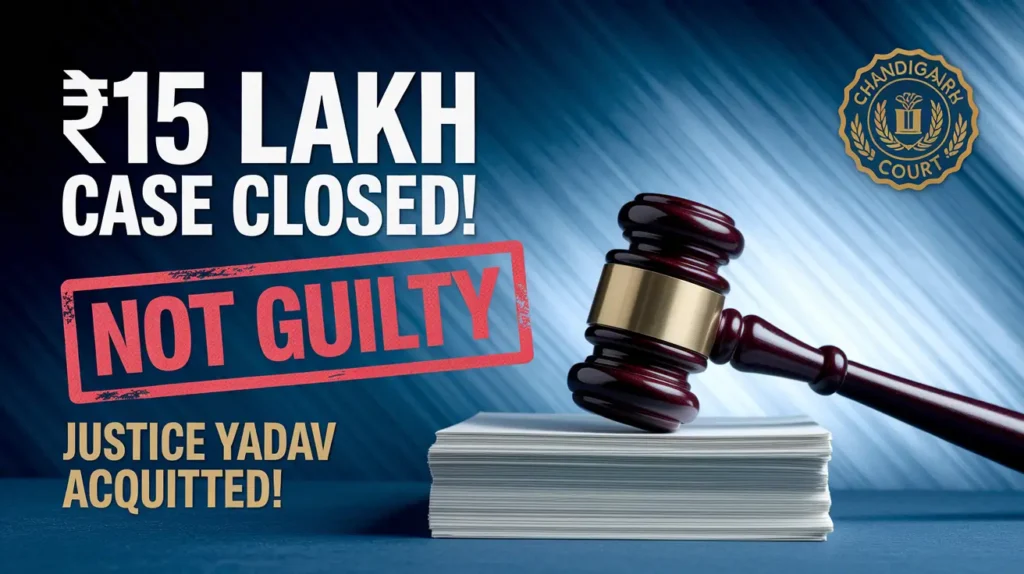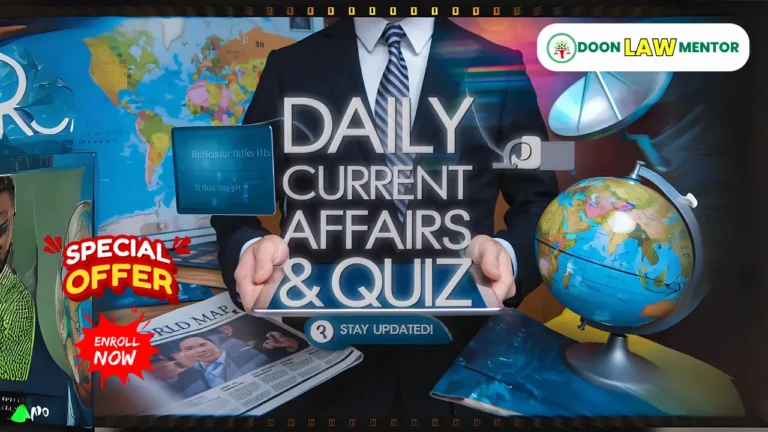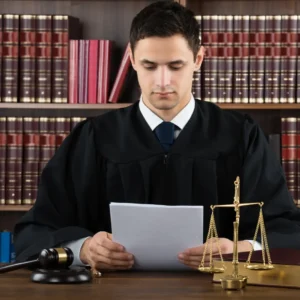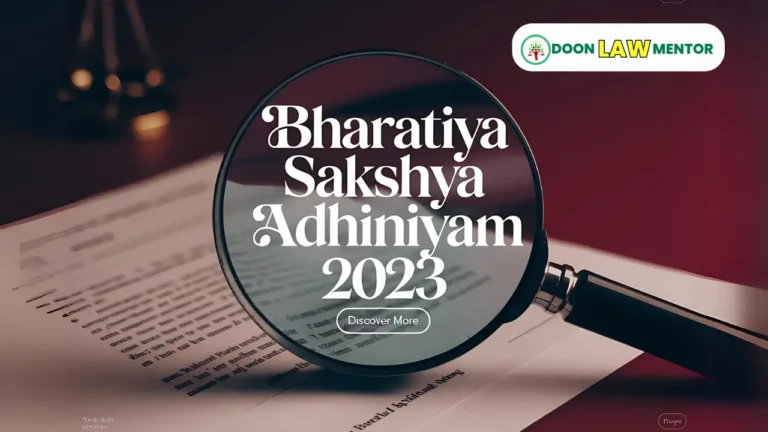After a 17-year legal battle, the Chandigarh Court acquitted Justice Nirmal Yadav and three others in the ₹15 lakh judicial controversy on March 29, 2025. The CBI case, originating in 2008, involved a misdelivered cash packet meant for Justice Yadav but sent to Justice Nirmaljit Kaur. This blog explores the case’s history, key developments, and its significance for Judiciary, APO, and JLO aspirants preparing for 2025 exams.
Table of Contents
Introduction
On March 29, 2025, a Chandigarh Court brought closure to a 17-year-long legal saga by acquitting Justice Nirmal Yadav, a former judge of the Punjab and Haryana High Court, in the ₹15 lakh judicial controversy. The case, initiated by the Central Bureau of Investigation (CBI) in 2008 under the title Central Bureau of Investigation v. Sanjiv Bansal & Ors, stemmed from a misdelivered packet of ₹15 lakh meant for Justice Yadav but delivered to another judge, Justice Nirmaljit Kaur.
Special Court Judge Alka Malik acquitted Justice Yadav and co-accused Ravinder Singh Bhasin, Rajiv Gupta, and Nirmal Singh, ending one of the longest trials in Chandigarh’s district courts. This blog provides a detailed analysis of the ₹15 lakh judicial controversy, its timeline, key developments, the court’s reasoning, and its implications for Judiciary, APO, and JLO aspirants preparing for 2025 exams.
Background of the ₹15 Lakh Judicial Controversy
The ₹15 lakh judicial controversy began on August 13, 2008, when a packet containing ₹15 lakh in cash was mistakenly delivered to the residence of Justice Nirmaljit Kaur, a sitting judge of the Punjab and Haryana High Court, in Sector 11, Chandigarh. The packet was delivered by Parkash Ram, a clerk working for Sanjeev Bansal, the then Additional Advocate General of Haryana. According to the prosecution, the cash was intended for Justice Nirmal Yadav, another sitting judge of the same court, as a bribe to influence a favorable judgment in a 2007 property dispute in Panchkula involving Bansal, property dealer Rajiv Gupta, and Delhi-based hotelier Ravinder Singh Bhasin.
Initial Incident and Response
- Justice Nirmaljit Kaur’s Reaction: Justice Kaur’s peon, Amrik Singh, received the packet, which Parkash Ram described as containing “papers from Delhi.” Upon opening it on Justice Kaur’s instructions, Amrik discovered currency notes and immediately alerted her. Justice Kaur recalled the incident in her 2016 statement: “I vividly remember that I was munching an apple… when my Peon Amrik walked in and said in Punjabi: ‘Madam, Delhi ton kaagaz aye nein’. I said ‘Khol ke dekh’. While he was struggling to open the tape wrapped around the packet, I felt that they were not papers and I immediately said: ‘Jaldi Khol’. In the process, he tore open the packet and I saw that they were currency notes. So, without wasting a second, I said: ‘Pakro, kaun laike aya hain’.”
Amrik, with the help of a guard, nabbed Parkash Ram, and Justice Kaur informed the Chandigarh Police. - Bansal’s Response: Within minutes, Sanjeev Bansal called Justice Kaur, claiming the money was meant for a realtor named Nirmal Singh (a namesake of Justice Nirmal Yadav) as brokerage for a deal, and had been delivered to her residence by mistake due to the similarity in names. However, Justice Kaur had already reported the incident to the police and informed the then Chief Justice of the Punjab and Haryana High Court, TS Thakur, and another judge, Mehtab Singh Gill.
Initial Investigation and Transfer to CBI
- FIR by Chandigarh Police: On August 16, 2008, the Chandigarh Police registered an FIR (No. 250 of 2008) at Sector 11 Police Station under Sections 11 and 12 of the Prevention of Corruption Act, 1988, and Section 120B (criminal conspiracy) read with Sections 192, 196, 199, and 200 of the Indian Penal Code (IPC), naming Justice Yadav, Sanjeev Bansal, Ravinder Singh Bhasin, Rajiv Gupta, and Nirmal Singh as accused.
- Transfer to CBI: On August 26, 2008, General (Retd) SF Rodrigues, then Governor of Punjab and Administrator of Union Territory, Chandigarh, transferred the case to the CBI due to its sensitivity and the involvement of a sitting High Court judge. The CBI re-registered the case on August 28, 2008, as FIR No. RC AC2 2008 A 004.
Timeline of the Case: A 17-Year Legal Battle
The ₹15 lakh judicial controversy unfolded over 17 years, marked by multiple twists, procedural delays, and legal challenges:
2008-2009: Initial Investigation and Closure Report
- August 2008: The incident came to light, and Justice Yadav went on leave amid the scandal. She was subsequently transferred to the Uttarakhand High Court in November 2009. Justice Nirmaljit Kaur was also cleared by an internal Supreme Court panel and the CBI, later transferred to the Rajasthan High Court in July 2012, returning to Punjab and Haryana High Court in 2018, and retiring in 2021.
- January 2009: The CBI sought sanction to prosecute Justice Yadav, but initially filed a closure report on December 17, 2009, citing lack of sanction for prosecution. The report concluded that while offenses were established, prosecution could not proceed without approval.
- February 2010: The Special CBI Court in Chandigarh rejected the closure report, ordering the CBI to re-investigate the case, as the Supreme Court clarified that the Chief Justice of India had not refused sanction, contrary to the CBI’s interpretation.
2010-2011: Sanction and Chargesheet
- November 2010: The Punjab and Haryana High Court granted sanction to prosecute Justice Yadav.
- March 1, 2011: The President of India approved the prosecution sanction.
- March 4, 2011: The CBI filed a chargesheet against Justice Yadav on the day of her retirement from the Uttarakhand High Court, under Section 11 of the Prevention of Corruption Act, 1988, and against the other accused under various sections of the IPC, including Section 120B (criminal conspiracy). Justice Yadav challenged the sanction in the Punjab and Haryana High Court (CRM M-14289 of 2011) and the Supreme Court (SLP (Criminal) No. 2317 of 2012), but both pleas were dismissed, with the Supreme Court allowing her to raise objections before the trial court.
2013-2014: Legal Challenges and Framing of Charges
- May 2013: Justice Yadav challenged a trial court order denying her access to certain documents related to the sanction (CRR No. 618 of 2013), but the Punjab and Haryana High Court upheld the trial court’s decision, stating only documents relied upon by the prosecution under Section 173 CrPC needed to be supplied.
- January 18, 2014: The Special CBI Court framed charges against Justice Yadav under Section 11 of the Prevention of Corruption Act, and against the other accused under Section 120B and other IPC sections, after the Supreme Court dismissed her plea for a stay on trial proceedings, criticizing her for delaying tactics.
2016-2017: Trial Developments and Bansal’s Death
- 2016: Justice Nirmaljit Kaur provided her statement via video conference, recalling the incident and her immediate actions to report the cash delivery.
- December 2016: Sanjeev Bansal died of a brain tumor at Max Hospital, Mohali, and proceedings against him were abated by the court in January 2017.
2019-2025: Witnesses and Final Verdict
- November 2019: Two prosecution witnesses, Vimal Bhardwaj and Kuldeep Singh, turned hostile, denying knowledge of Ravinder Singh Bhasin’s involvement despite earlier statements to the CBI. Over the trial, 13 of 69 witnesses turned hostile, and 4 witnesses died.
- February 2025: The Punjab and Haryana High Court permitted the CBI to re-examine 12 witnesses within four weeks, directing the trial court to avoid unnecessary adjournments.
- March 2025: The trial court closed prosecution evidence on March 17, recorded statements of the accused by March 26, heard final arguments on March 27, and delivered the verdict on March 29, acquitting all accused.
Key Details of the Trial and Verdict
The ₹15 lakh judicial controversy trial, one of the longest in Chandigarh’s district courts, spanned 17 years and involved over 300 hearings across various judges. Here are the key details:
Prosecution’s Case
- The CBI alleged that the ₹15 lakh was a bribe meant for Justice Nirmal Yadav to influence a 2007 property dispute in Panchkula, involving Sanjeev Bansal, Rajiv Gupta, and Ravinder Singh Bhasin.
- The agency claimed the money was delivered by Bansal’s clerk, Parkash Ram, but due to the similarity in names (Nirmaljit Kaur and Nirmal Yadav), it reached Justice Kaur’s residence.
- The CBI further alleged that Justice Yadav demanded another ₹15 lakh from Ravinder Singh Bhasin the next day, which was delivered through Rajiv Gupta, and that she had a close relationship with the accused, evidenced by phone records and favors like air tickets and mobile phone usage.
Challenges in Prosecution
- Witnesses: The prosecution cited 84 witnesses, but only 69 were examined. 13 witnesses turned hostile, including Justice Yadav’s personal security officer, Renu Bansal (Sanjeev Bansal’s wife), Raj Kumar Jindal (Bansal’s cousin), and Santosh Tripathi (Bansal’s colleague). 4 witnesses died during the trial.
- Bansal’s Death: The death of Sanjeev Bansal in 2016 weakened the prosecution’s case, as he was a key accused.
- Lack of Evidence: The court found no incriminating evidence against Justice Yadav, as stated by her counsel, Vishal Garg Narwana, and Justice Yadav herself: “I have not committed any crime and there is nothing incriminating found during the entire trial against me.”
Defense Arguments
- Justice Nirmal Yadav: Represented by Senior Advocate SK Garg Narwana and Advocate Vishal Garg Narwana, Justice Yadav denied all allegations, claiming she never demanded or accepted a bribe and was a victim of a conspiracy by “vested interests” within the judiciary, as she stated in a 2013 interview with Headlines Today. She also argued that the CBI investigation lacked proper sanction and was influenced by external pressures.
- Ravinder Singh Bhasin: Represented by his counsel, Bhasin claimed the ₹15 lakh was for a land purchase in Solan, Himachal Pradesh, where he and Justice Yadav were co-owners, not a bribe.
- Nirmal Singh: Represented by Advocate Hitesh Puri, Nirmal Singh was part of the defense that successfully argued the lack of evidence linking the accused to the alleged corruption.
Court’s Verdict
- On March 29, 2025, Special CBI Judge Alka Malik acquitted Justice Nirmal Yadav, Ravinder Singh Bhasin, Rajiv Gupta, and Nirmal Singh, citing insufficient evidence to prove the corruption charges.
- The court’s decision came after a rigorous trial process, with the final arguments heard on March 27, 2025, following the closure of prosecution evidence on March 17 and the recording of accused statements by March 26.
Critical Analysis: A Case of Mistaken Identity and Judicial Integrity
The ₹15 lakh judicial controversy raises several critical questions about judicial integrity, investigative processes, and the challenges of prosecuting high-profile figures:
- Mistaken Identity and Initial Response: The case began with a clerical error—a misdelivery due to the similarity in names between Justice Nirmaljit Kaur and Justice Nirmal Yadav. Justice Kaur’s swift action in reporting the incident to the police and the Chief Justice demonstrated her integrity, but the CBI’s initial closure report and subsequent re-investigation suggest inconsistencies in the investigative process.
- CBI’s Handling of the Case: The CBI’s initial closure report in 2009, citing lack of sanction, and its rejection by the court, indicate potential lapses in the agency’s approach. The re-examination of witnesses in 2025, permitted by the Punjab and Haryana High Court, aimed to strengthen the case, but the high number of hostile witnesses (13 out of 69) and the death of key accused Sanjeev Bansal weakened the prosecution’s position.
- Judicial Integrity and Public Perception: The case, being the first instance of a sitting High Court judge being booked for corruption, sparked significant public and media attention, raising questions about judicial integrity. Justice Yadav’s acquittal after 17 years may restore her reputation, but it also highlights the lengthy judicial process and the difficulty of proving corruption without concrete evidence.
- Systemic Issues: The trial’s duration—17 years with over 300 hearings—reflects systemic delays in India’s judicial system, exacerbated by adjournments, witness issues, and the death of key figures. The CBI’s reliance on circumstantial evidence, such as phone records, was insufficient to establish guilt, underscoring the need for stronger investigative mechanisms in corruption cases involving public officials.
The acquittal also prompts reflection on whether the CBI was influenced by external pressures, as Justice Yadav alleged in 2013, claiming she was targeted by “vested interests” within the judiciary to protect “somebody near and dear to them.” While the court found no evidence to support the corruption charges, the case underscores the need for transparency and accountability in judicial appointments and investigations.
Implications of the Verdict
The Chandigarh Court’s verdict in Central Bureau of Investigation v. Sanjiv Bansal & Ors has significant implications for judicial accountability, consumer protection, and legal processes:
- Judicial Accountability: The acquittal of Justice Nirmal Yadav after 17 years may restore her reputation, but it also highlights the challenges of prosecuting high-ranking judicial officers. The case’s high profile underscores the need for robust mechanisms to ensure judicial accountability without undue delays.
- Consumer Protection and Public Trust: While the case does not directly involve consumer rights, its resolution reinforces public trust in the judiciary by demonstrating that even high-profile figures are subject to legal scrutiny, albeit with a fair trial.
- Legal Precedent: The verdict sets a precedent for future corruption cases involving judicial officers, emphasizing the importance of credible evidence and the challenges of proving intent in bribery allegations.
- Systemic Reforms: The lengthy trial process highlights the need for judicial reforms to expedite high-profile cases, reduce adjournments, and ensure witness reliability, as seen with the hostile witnesses and deaths during the trial.
Relevance for Judiciary, APO, and JLO Aspirants
The ₹15 lakh judicial controversy and the Chandigarh Court’s verdict in Central Bureau of Investigation v. Sanjiv Bansal & Ors are highly relevant for Judiciary, APO, and JLO aspirants preparing for 2025 exams:
- Prelims: Expect questions on the case name (CBI v. Sanjiv Bansal & Ors), the amount involved (₹15 lakh), the key accused (Justice Nirmal Yadav), and the court’s verdict (acquittal).
- Mains: Write essays on topics like “Judicial Accountability and Corruption in India” or “Challenges in Prosecuting High-Profile Corruption Cases,” using this case to discuss investigative lapses, witness reliability, and trial delays. Analyze the role of the Prevention of Corruption Act, 1988, and its application in judicial corruption cases.
- Interviews: Discuss the implications of the verdict on judicial integrity, the CBI’s role in investigating corruption, and the need for systemic reforms to expedite trials, citing the 17-year duration and witness issues in this case.
Conclusion
The Chandigarh Court’s acquittal of Justice Nirmal Yadav and three others on March 29, 2025, in the ₹15 lakh judicial controversy marks the end of a 17-year legal battle that began with a misdelivered cash packet in 2008. The case, which involved allegations of bribery to influence a property dispute, highlighted the challenges of prosecuting high-profile figures, with issues like hostile witnesses, trial delays, and insufficient evidence undermining the CBI’s case. While the verdict clears Justice Yadav of the corruption charges, it raises broader questions about judicial accountability, investigative rigor, and the need for systemic reforms in India’s legal system. For Judiciary, APO, and JLO aspirants, this case offers valuable insights into corruption laws, trial processes, and the importance of evidence in high-stakes legal battles, making it a key topic for 2025 exam preparation.
Call-to-Action
Stay updated on landmark cases like the ₹15 lakh judicial controversy for your 2025 exams! Join Doon Law Mentor’s Courses for expert guidance. Follow @doonlawmentor on Instagram for daily legal updates!
FAQs
- What was the ₹15 lakh judicial controversy about?
The ₹15 lakh judicial controversy involved a 2008 corruption case where a packet of ₹15 lakh was allegedly meant for Justice Nirmal Yadav but was mistakenly delivered to Justice Nirmaljit Kaur, leading to a CBI investigation. - Who was acquitted in the ₹15 lakh judicial controversy case?
Justice Nirmal Yadav, Ravinder Singh Bhasin, Rajiv Gupta, and Nirmal Singh were acquitted by the Chandigarh Court on March 29, 2025. - What was the role of Justice Nirmaljit Kaur in the case?
Justice Nirmaljit Kaur received the ₹15 lakh packet by mistake, reported it to the police, and informed the Chief Justice, triggering the investigation. - Why did the Chandigarh Court acquit Justice Nirmal Yadav?
The court acquitted Justice Nirmal Yadav due to insufficient evidence, with many witnesses turning hostile and no incriminating evidence found against her. - What happened to Sanjeev Bansal in the ₹15 lakh judicial controversy?
Sanjeev Bansal, a key accused, died of a brain tumor in December 2016, and proceedings against him were abated in January 2017. - How long did the ₹15 lakh judicial controversy trial last?
The trial lasted 17 years, from 2008 to 2025, with over 300 hearings across various judges. - What sections were invoked in the ₹15 lakh judicial controversy case?
The case was filed under Section 11 and 12 of the Prevention of Corruption Act, 1988, and Section 120B read with Sections 192, 196, 199, and 200 of the IPC. - How many witnesses were examined in the trial?
The prosecution cited 84 witnesses, but only 69 were examined, with 13 turning hostile and 4 dying during the trial. - What did Justice Nirmal Yadav say about the allegations?
Justice Nirmal Yadav denied the allegations, stating, “I have not committed any crime and there is nothing incriminating found during the entire trial against me.” - Why is the ₹15 lakh judicial controversy important for Judiciary aspirants?
The case highlights judicial accountability, corruption laws, and trial challenges, making it a key topic for prelims, mains, and interviews in 2025 exams.
#JusticeNirmalYadav, #₹15LakhControversy, #ChandigarhCourt, #CBICase #doonlawmentor #cashatjudgehome










